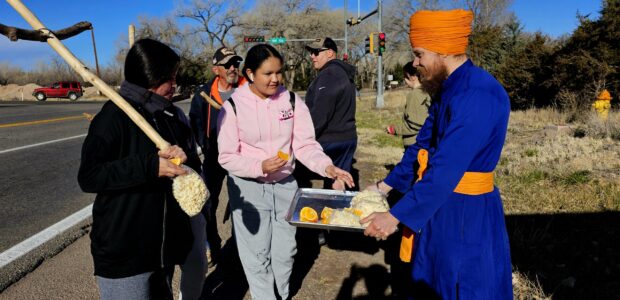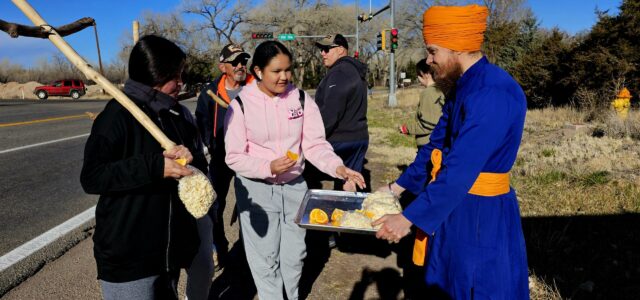by SS Jivan Joti Kaur Khalsa, PhD, Santa Cruz, New Mexico
2024 (Second Quarter)
Sikhs have a long tradition of serving food. One of the earliest accounts of this practice dates from 1481, when the first Sikh Guru, Guru Nanak, was 12 years old. He took money that his father gave him to invest in business and instead bought food to serve the saints and the poor. Ever since, Sikhs have been serving food in countless situations and to any population that is in need. Whether there is a natural disaster, refugees displaced from war, or food shortages from a pandemic, if there is hunger, Sikhs will be there serving food.
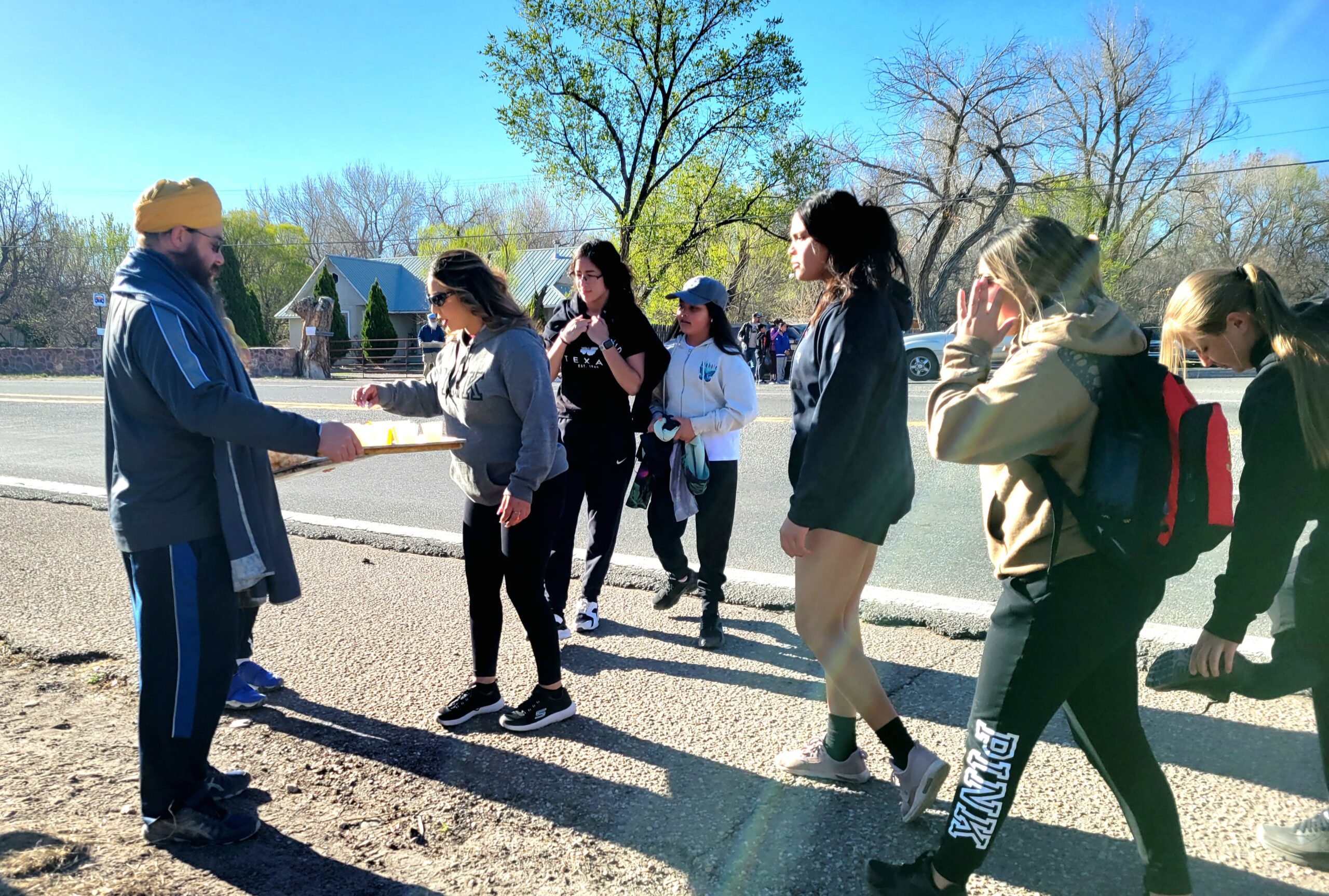
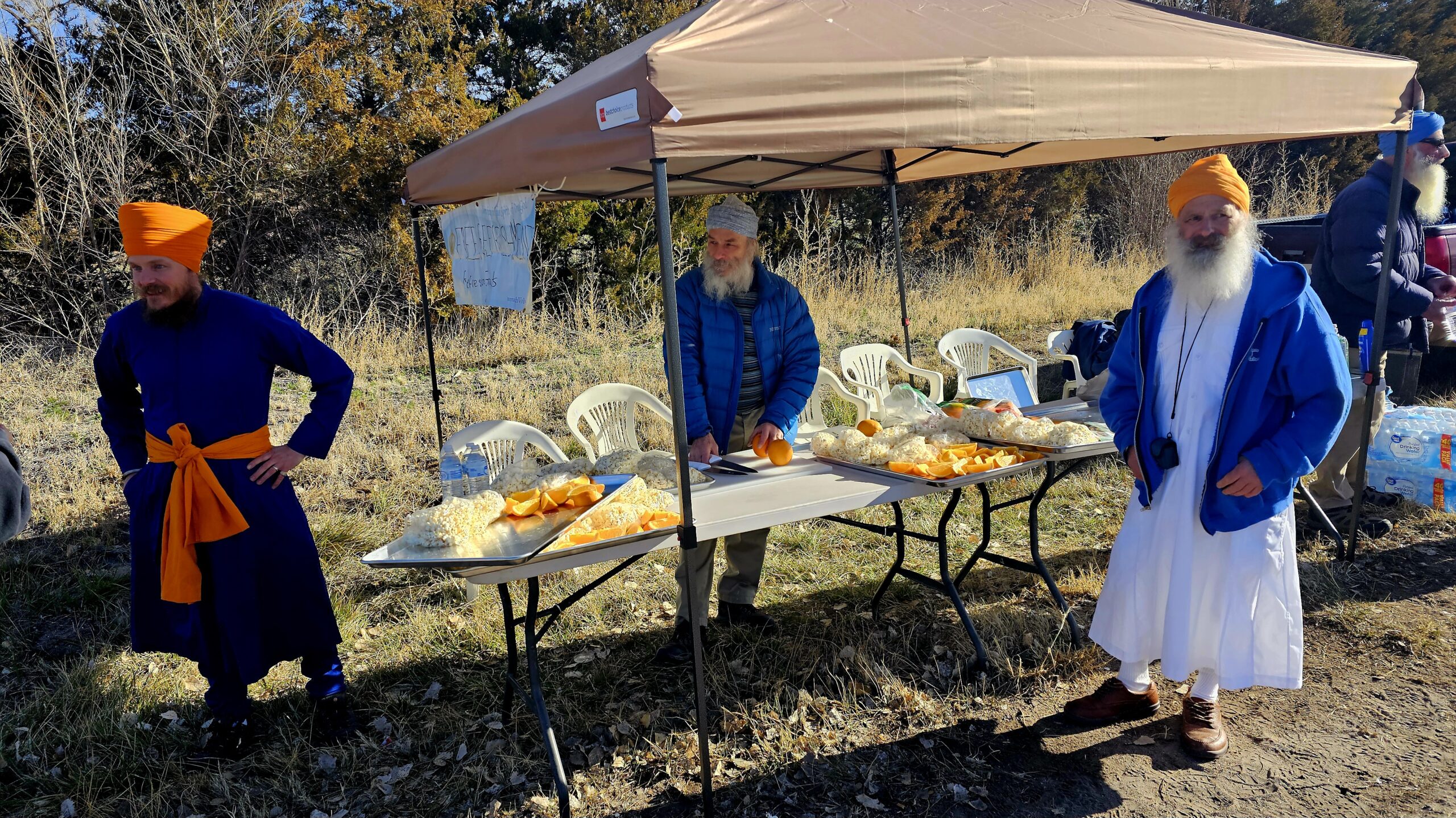
This is also true for the Sikh members of Hacienda de Guru Ram Das (HGRD) in Espanola, New Mexico.
Nestled in the dusty hills of Chimayo, north of Santa Fe, is an adobe church called Santuario de Chimayo. It is widely believed that the soil in and surrounding the Santuario has potent healing powers. During Holy Week before Easter and especially on Good Friday, up to 60,000 pilgrims make the journey to this sacred place, in what is considered the largest ritual pilgrimage in the United States. Pilgrims come from all over the state and even from other countries to heal themselves and to pray for their friends and families. There are many accounts of miraculous recoveries, and the chapel walls are filled with stories, prayers, and even no-longer–needed crutches.
Every Good Friday since the early 1980s, HGRD has been serving the pilgrims on their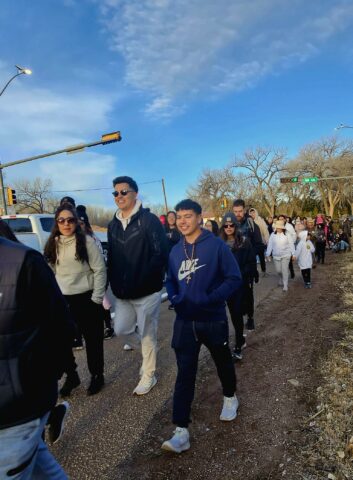 long walk to Santuario de Chimayo. Over the subsequent decades, the way we serve the Good Friday pilgrims has gone through many changes. This seva began through an ashram committee called The Outreach Misl of Hacienda de Guru Ram Das, led by Amrit Kaur (now a resident of Albuquerque). During every Holy Week, she would receive a call from Guru Simran Kaur, the Ranch Custodian, with a message from the Siri Singh Sahib, to ensure that we were set and ready for Good Friday. This annual seva was very near and dear to his heart. He told Amrit Kaur that it was one of the most important sevas in our community and that it should always continue, no matter the weather.
long walk to Santuario de Chimayo. Over the subsequent decades, the way we serve the Good Friday pilgrims has gone through many changes. This seva began through an ashram committee called The Outreach Misl of Hacienda de Guru Ram Das, led by Amrit Kaur (now a resident of Albuquerque). During every Holy Week, she would receive a call from Guru Simran Kaur, the Ranch Custodian, with a message from the Siri Singh Sahib, to ensure that we were set and ready for Good Friday. This annual seva was very near and dear to his heart. He told Amrit Kaur that it was one of the most important sevas in our community and that it should always continue, no matter the weather.
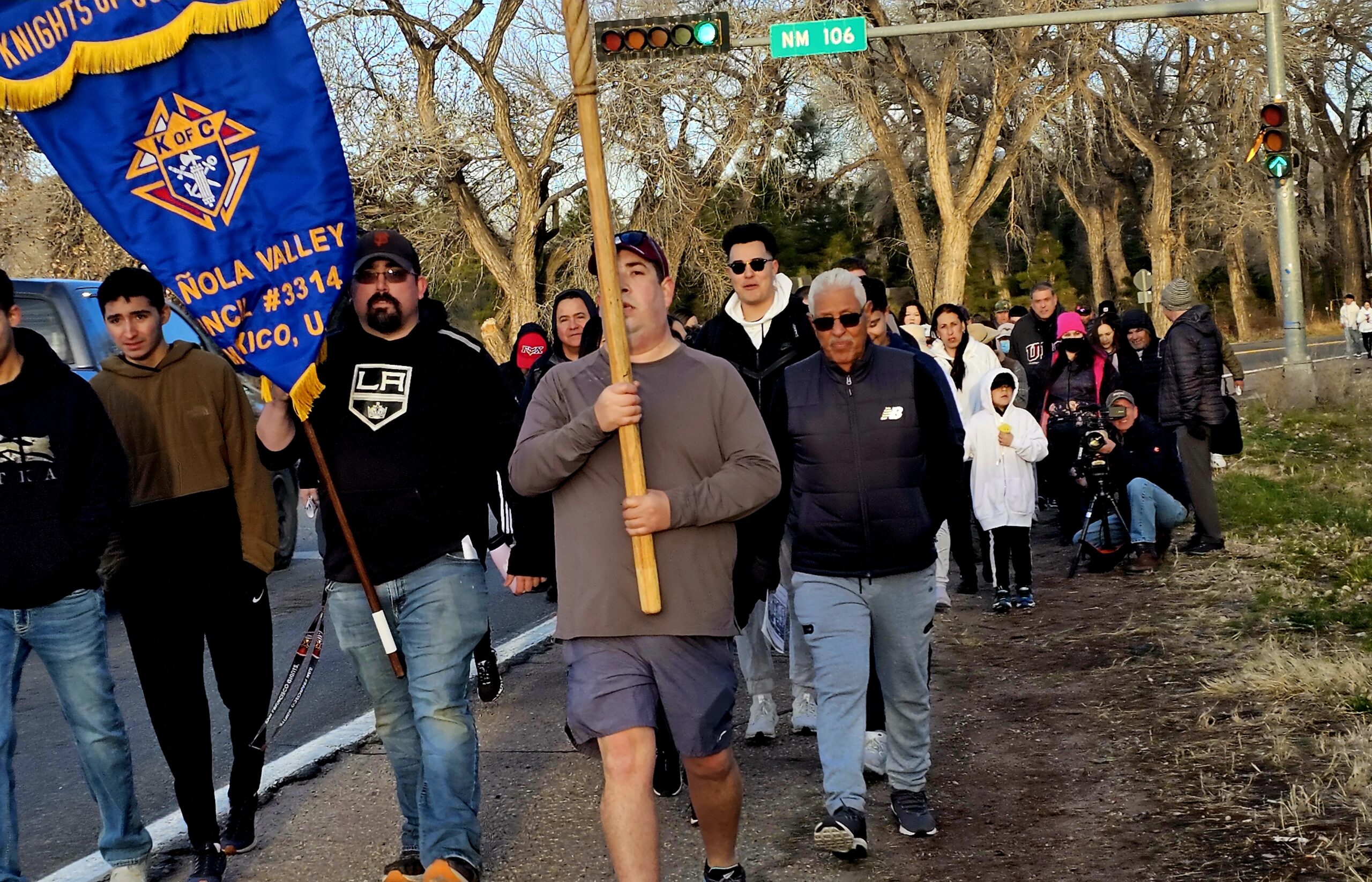
One Thursday night before Good Friday, Amrit Kaur called me, asking “As it is snowing like crazy, should we still serve the pilgrims tomorrow morning?” I asked her if she thought the pilgrims would still be walking. Her reply was an immediate, “Of course!” My reply was just as quick. “Then we’ll be serving.”
At that time, we had a Khalsa preschool and elementary school at the ashram. The children, all bundled up in warm coats and gloves, came out to participate in serving the pilgrims snacks and drinks. Two of the children who served every year of their childhood were Amrit Kaur’s sons, Hari Singh and Prabhu Singh. Now, as adults, along with their wives, Sita and Regina, they have not only continued but taken on the role of organizing the event. Their friends, spouses, children, and even some of us ‘old-timers’ come out to serve. This last Good Friday, we were three generations serving.
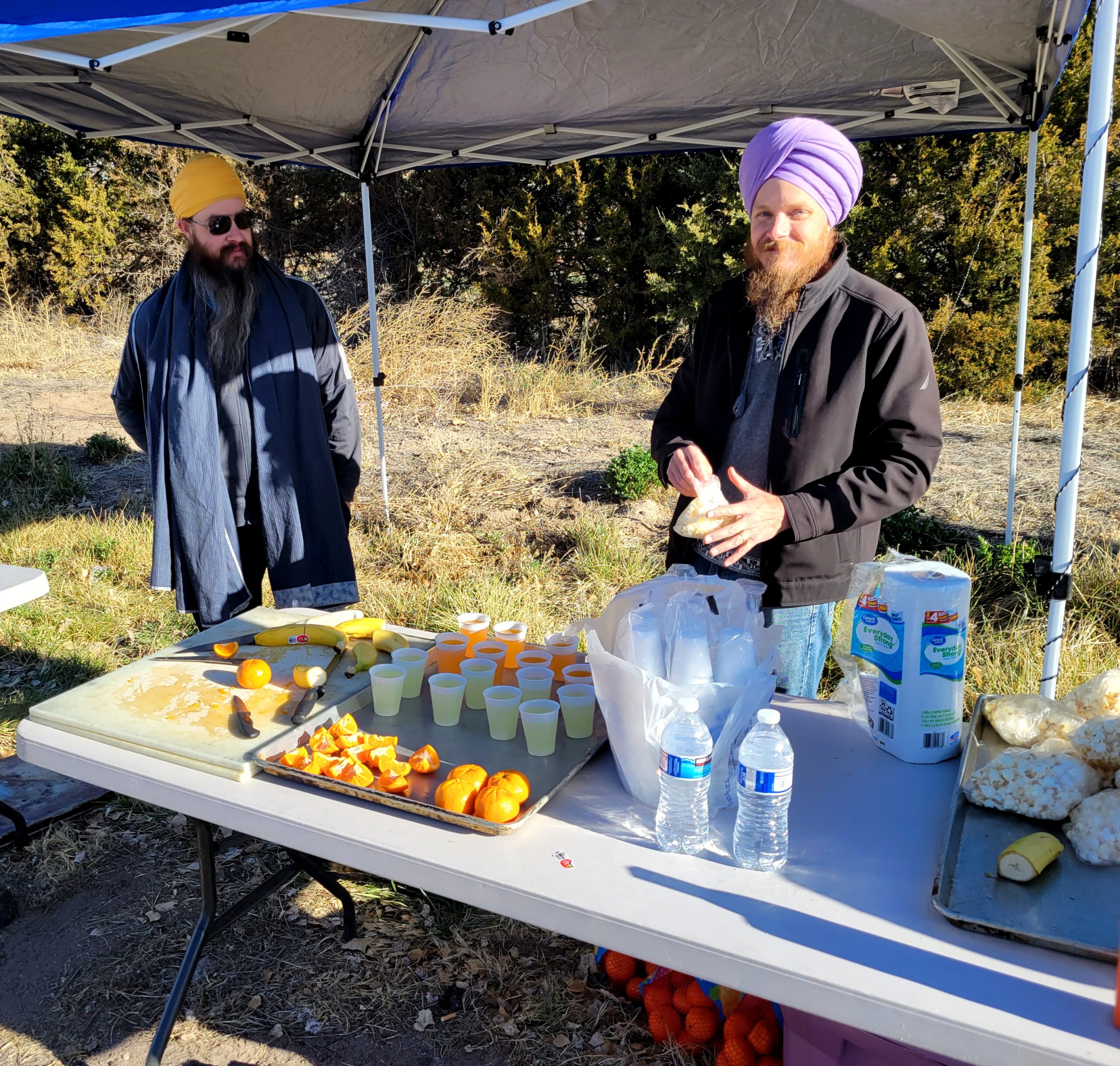
After many years of doing this seva, Amrit Kaur was asked about her experience:
“Every year, in the sun, rain, or even the snow, as we set up our table and eventually canopy by the roadside for the Good Friday pilgrimage seva, I would think about why the pilgrims were out walking and what they were feeling in their hearts.
One year, an older gentleman, walking with his entire large family, with his grandson riding on his shoulders, came up to us and said that one of the high points of his long walk to the Santuario was to stop by our humble service booth to visit and warm up. He said it was not only for the hot drinks but also for the friendly smiles and conversation. He said this yearly interaction had piqued his family’s curiosity and openness about the Sikh community and always warmed not only their bodies but also their hearts. He smilingly added that this was something Jesus would like. And I also knew in my heart that Guru Ram Das was very much liking it too.”
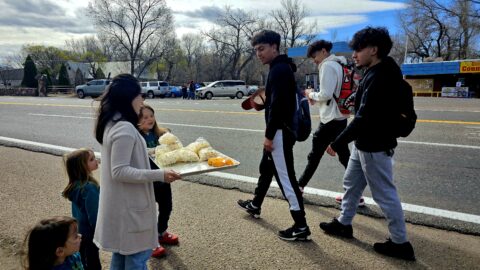 I have also done this blessed seva for decades. Thank goodness for the many wonderful sevadars (volunteers) who have kept up every year for over 40 years. Some years I brought my grandchildren, and this year Prabhu Singh and Regina brought their 3 sons, ages 2, 4, and 6. This year I noticed that there were more service booths along the route and I wondered if we were still needed. A woman who approached me answered my question. She said, “I am so glad that you all are still here. It gives me so much comfort to know that you will be here every year on my walk, with your big smiles and welcoming hearts.” I reassured her that we would continue to be here year after year. And then I thought, After all, serving is our tradition, blessing, and legacy.
I have also done this blessed seva for decades. Thank goodness for the many wonderful sevadars (volunteers) who have kept up every year for over 40 years. Some years I brought my grandchildren, and this year Prabhu Singh and Regina brought their 3 sons, ages 2, 4, and 6. This year I noticed that there were more service booths along the route and I wondered if we were still needed. A woman who approached me answered my question. She said, “I am so glad that you all are still here. It gives me so much comfort to know that you will be here every year on my walk, with your big smiles and welcoming hearts.” I reassured her that we would continue to be here year after year. And then I thought, After all, serving is our tradition, blessing, and legacy.
ABOUT THE AUTHOR
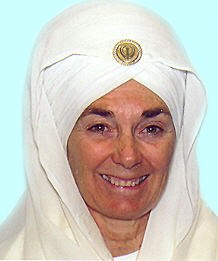 SS JivanJoti Kaur Khalsa holds a PhD in Psychology/Counseling, and has studied Kundalini Yoga and Meditation since 1970. She is a KRI certified Level 1, 2 and 3 Trainer. She is also a Level III certified Sat Nam Rasayan Instructor and Healer and has been a Sikh Minister since 1974. She has authored three books: The Art of Making Sex Sacred, Editions 1 and 2; Dying Into Life: The Yoga of Death, Loss and Transformation, Editions 1 and 2; and A Million Rays of Light: The Yoga of Aging and Chronic Illness. Her latest and probably last contribution to her mission is a Dying into Life training – a yogic/eastern based death-doula type program on how to die consciously and help another as well. For more information, contact her at [email protected]
SS JivanJoti Kaur Khalsa holds a PhD in Psychology/Counseling, and has studied Kundalini Yoga and Meditation since 1970. She is a KRI certified Level 1, 2 and 3 Trainer. She is also a Level III certified Sat Nam Rasayan Instructor and Healer and has been a Sikh Minister since 1974. She has authored three books: The Art of Making Sex Sacred, Editions 1 and 2; Dying Into Life: The Yoga of Death, Loss and Transformation, Editions 1 and 2; and A Million Rays of Light: The Yoga of Aging and Chronic Illness. Her latest and probably last contribution to her mission is a Dying into Life training – a yogic/eastern based death-doula type program on how to die consciously and help another as well. For more information, contact her at [email protected]

